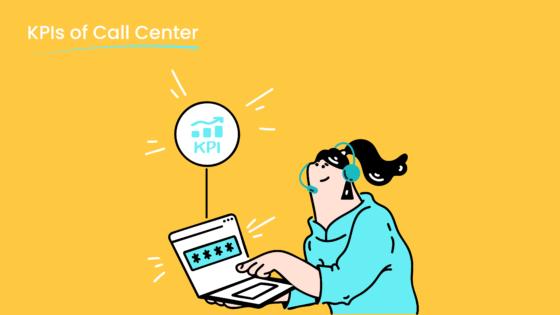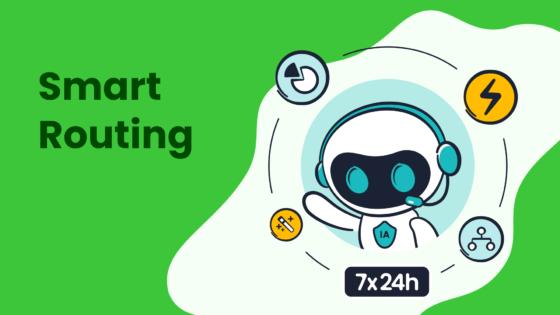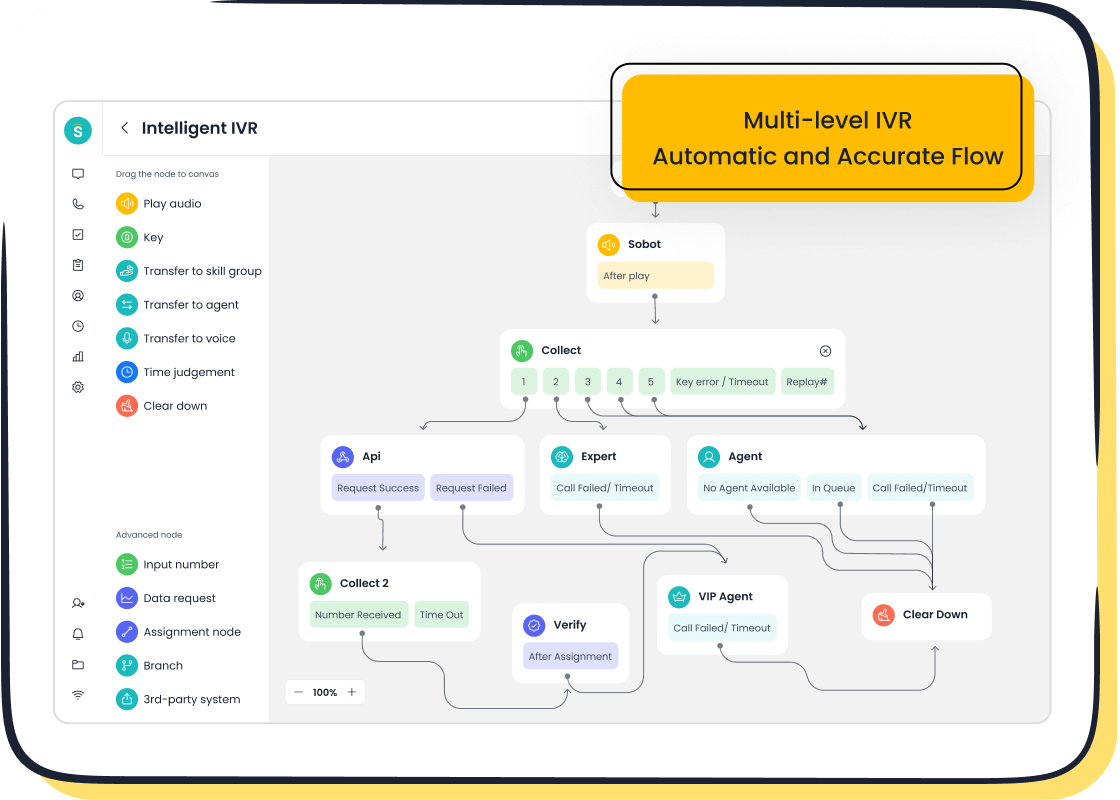Boost Business with CRM and Contact Center Integration

In today’s fast-paced business environment, customer relationships form the backbone of success. CRM systems empower you to track and manage customer interactions, while contact center software ensures seamless communication across channels. When combined, these tools revolutionize how you deliver service, boosting customer satisfaction and driving growth. For instance, businesses that adopt crm integration with contact center software report a 74% improvement in customer satisfaction rates and a 50% increase in agent productivity. Sobot, a leading provider of integrated solutions, offers advanced tools like AI-powered Voicebots and unified workspaces to help you unlock these benefits effortlessly.
Understanding CRM and Contact Center Software
What is CRM?
Customer Relationship Management (CRM) software is your ultimate tool for building and maintaining strong customer relationships. It acts as a centralized hub where you can store essential customer data, track interactions, and manage leads. With features like contact management, lead prioritization, and opportunity tracking, CRM helps you stay organized and focused on growth. For example, integrating email and calendar tools ensures you never miss a follow-up or meeting. Advanced CRM systems even use artificial intelligence to provide real-time insights, enabling you to make smarter decisions. By adopting CRM, you can streamline operations and deliver personalized experiences that keep customers coming back.
What is Contact Center Software?
Contact center software is designed to revolutionize how you communicate with customers. It provides omnichannel support, allowing you to engage with customers through voice, email, chat, and social media—all from one platform. This software improves first-contact resolution rates, reduces wait times, and boosts agent productivity. For instance, Sobot’s contact center software offers intelligent IVR systems, AI-powered Voicebots, and unified workspaces to enhance efficiency. It also tracks key performance metrics like average speed of answer and service levels, helping you identify areas for improvement. With contact center software, you can deliver faster, more effective service while keeping customers satisfied.
How They Work Together in Customer Service
When CRM and contact center software work together, they create a seamless customer service experience. Imagine a scenario where a customer calls your support team. The contact center software instantly routes the call to the right agent, while the CRM provides the agent with the customer’s history and preferences. This integration enables agents to resolve issues faster and offer personalized solutions. Companies that combine these tools often see a significant boost in customer satisfaction and operational efficiency. For example, a travel insurance provider using integrated systems reduced its abandon rate by 55% and sped up claims processing by 10 days. By uniting these technologies, you can transform your customer service into a competitive advantage.
Why CRM Integration with Contact Center Software is Essential
Centralized Customer Data for Better Insights
Integrating CRM with contact center software creates a unified repository of customer data, offering you a 360-degree view of every interaction. This centralized approach eliminates data silos, ensuring that your agents have real-time access to customer history, preferences, and past interactions. With this information at their fingertips, agents can provide personalized greetings, tailor recommendations, and resolve issues faster.
When you integrate your CRM and contact center, you remove the errors that result from manual processes, allowing your business to run more efficiently.

For example, Sobot’s Voice/Call Center seamlessly integrates with CRM systems, enabling agents to track and analyze call data in real time. This integration not only enhances forecasting but also improves operational efficiency by identifying trends and optimizing workflows. According to industry reports, businesses leveraging centralized data experience benefits such as:
| Benefit | Description |
|---|---|
| Enhanced forecasting | Analyzing historical data helps organizations identify trends and patterns for optimal forecasting. |
| Increased efficiency | Data analysis highlights process inefficiencies, optimizing operations and reducing costs. |
| Improved customer experience | Real-time data allows for personalized interactions and timely responses, enhancing satisfaction. |
By centralizing customer data, you can make informed decisions, improve customer satisfaction, and gain a competitive edge.
Streamlined Communication Across Channels
CRM integration with contact center software ensures seamless communication across multiple channels, including voice, email, chat, and social media. This omnichannel approach allows customers to interact with your business through their preferred medium without losing context. For instance, if a customer starts a conversation via email and later switches to a phone call, the agent can access the entire interaction history in one unified workspace.

This streamlined communication reduces customer effort, which is critical for retention. Research shows that 94% of customers with low-effort experiences are likely to repurchase, while 96% are likely to churn after high-effort experiences. Sobot’s Omnichannel Solution excels in this area by consolidating all communication channels into a single platform. Features like AI-driven chatbots and intelligent IVR systems ensure faster query resolution and consistent service.
- Key Advantages of Streamlined Communication:
- Unified customer experience across channels.
- Faster resolution times due to easy access to relevant information.
- Consistent service that avoids repetition and confusion.
By integrating CRM and contact center software, you can deliver a cohesive and efficient customer experience that builds loyalty and trust.
Enhanced Collaboration Between Teams
Integrating CRM with contact center software fosters better collaboration between your sales, marketing, and support teams. A shared platform ensures that all departments have access to the same customer data, enabling them to work together more effectively. For example, your marketing team can use insights from the contact center to create targeted campaigns, while your sales team can prioritize leads based on customer interactions.

Integrated systems also streamline workflows by automating tasks and escalating issues to the right teams. Sobot’s solutions, such as its AI-powered Voicebot and unified workspace, enhance team collaboration by providing a central hub for managing customer interactions. This approach not only improves productivity but also ensures that customer issues are resolved quickly and efficiently.
- How Integration Boosts Team Collaboration:
- Centralized workspaces improve communication and productivity.
- Automated workflows enable faster issue resolution.
- Shared insights help teams align their strategies and goals.
By integrating CRM and contact center software, you empower your teams to collaborate seamlessly, leading to better outcomes for your business and your customers.
Key Benefits of CRM and Contact Center Integration

Improved Customer Experience and Satisfaction
Integrating customer relationship management with contact center software transforms how you interact with customers. It enables you to deliver personalized experiences by leveraging centralized data. For example, agents can access a customer’s purchase history, preferences, and previous interactions in real time. This allows them to provide tailored solutions and proactive support, which significantly enhances the customer experience.
Studies show that businesses using integrated systems report higher customer satisfaction due to improved response times and personalized service. Key metrics include:
- Enhanced customer service through better data tracking.
- Personalized experiences based on customer behavior analysis.
- Improved response times leading to higher satisfaction.

Sobot’s contact center software excels in this area by offering features like AI-powered Voicebots and intelligent IVR systems. These tools streamline communication and ensure faster resolutions, leaving customers delighted and loyal.
Increased Efficiency and Reduced Costs
Integration between CRM and contact center software eliminates inefficiencies caused by siloed systems. A unified platform automates workflows, reduces manual errors, and optimizes resource allocation. For instance, Sobot’s solutions provide real-time analytics and intelligent call routing, ensuring agents focus on high-priority tasks.
Statistical analyses validate these efficiency gains:
| Evidence Type | Description |
|---|---|
| Predictive Accuracy Improvement | Companies using AI-based solutions report a 30-40% improvement in forecasting accuracy. |
| Reduction in Forecasting Errors | A case study showed a nearly 40% reduction in forecasting errors after adopting AI-powered analytics. |
| ROI Calculation | Migrating to cloud systems optimizes ROI by reducing hardware and energy costs. |
By integrating these systems, you not only save time but also reduce operational costs, making your business more profitable.
Enhanced Sales and Upselling Opportunities
CRM integration with contact center software empowers your sales team to identify and act on upselling opportunities. AI-driven insights analyze customer behavior and predict when a customer is ready for an upgrade or complementary product. For example, if a customer frequently purchases a specific product, the system can suggest premium alternatives or related items.
Key benefits include:
- Insights into customer purchase history and preferences.
- Tailored recommendations for complementary products.
- Increased average transaction value and customer satisfaction.
Sobot’s unified workspace consolidates all customer data, enabling your sales team to make informed decisions. This approach not only boosts revenue but also strengthens customer relationships by offering solutions that truly meet their needs.
Advanced Analytics for Better Decision-Making
Advanced analytics is a game-changer for businesses aiming to make smarter decisions. By integrating CRM with contact center software, you unlock the power of real-time data and actionable insights. This integration allows you to analyze customer behavior, track performance, and predict trends, giving you a competitive edge in your industry.
Imagine having access to a dashboard that highlights inefficiencies, identifies sales opportunities, and forecasts customer needs. For example, Sobot’s Voice/Call Center provides real-time monitoring and analysis of call data, enabling you to optimize workflows and improve service delivery. With these insights, you can allocate resources more effectively, enhance customer satisfaction, and boost operational efficiency.
Here’s how advanced analytics supports decision-making across various business areas:
| Metric | Application in Decision-Making |
|---|---|
| Patient Outcome Predictions | Identifying high-risk patients for targeted interventions post-discharge. |
| Resource Allocation | Optimizing staffing and resources based on predicted patient volumes. |
| Clinical Decision Support | Providing evidence-based treatment recommendations using real-time data. |
| Data-Driven Insights | Generating comprehensive reports to monitor performance against goals. |
| Identifying Sales Opportunities | Analyzing customer behavior to find potential sales opportunities. |
| Operational Efficiency | Identifying process inefficiencies and recommending improvements. |
When you integrate these systems, you gain a 360-degree view of your operations. This holistic perspective helps you make informed decisions that drive growth and profitability. For instance, analyzing customer interaction data can reveal patterns that guide your marketing strategies or product development.
Sobot’s solutions excel in delivering these benefits. With features like intelligent call tracking and AI-powered analytics, you can transform raw data into meaningful insights. This empowers your team to act quickly and confidently, ensuring your business stays ahead of the curve.
💡 Tip: Businesses using advanced analytics report a 30-40% improvement in forecasting accuracy, leading to better resource allocation and higher ROI.
By embracing advanced analytics through CRM and contact center integration, you position your business for long-term success. The insights you gain will not only improve decision-making but also enhance customer experiences, making your brand a trusted choice in the market.
How to Implement CRM Integration with Contact Center Software
Choosing the Right Tools: Native vs. Third-Party Integrations
Selecting the right tools is the foundation of successful integration. You have two primary options: native integrations or third-party solutions. Each comes with its own set of advantages and challenges, so understanding them is crucial.
| Integration Type | Pros | Cons |
|---|---|---|
| Native Integrations | - Saves time and costs by avoiding third-party tools | - Requires significant time and effort to build and maintain |
| - Ideal for limited integrations with available engineering resources | - Difficult to scale as your needs grow | |
| - Reduces security and legal risks | - Relies heavily on specific developers | |
| Third-Party Integrations | - Frees up your team to focus on core tasks | - Requires technical expertise for effective use |
| - Scales quickly to meet growing demands | - May lack access to specific data or desired integrations | |
| - Offers monitoring and troubleshooting features | - Potential data protection concerns with some vendors |

If your business requires quick scalability and diverse functionalities, third-party integrations may be the better choice. However, native integrations work well when you have a smaller scope and dedicated engineering resources. For example, Sobot’s contact center software offers seamless integration with CRM systems, ensuring you can choose the best approach for your needs without compromising on efficiency or security.
Steps to Seamlessly Integrate CRM and Contact Center Software
A structured approach ensures a smooth integration process. Follow these nine steps to achieve success:
- Conduct a Needs Assessment: Identify your business goals and the specific challenges you aim to solve with integration.
- Choose a CRM: Select a CRM that aligns with your operational needs and supports integration with your contact center software.
- Plan and Strategize: Develop a detailed roadmap, including timelines, resource allocation, and key performance indicators (KPIs).
- Customize and Integrate: Tailor the systems to your business processes and connect them for seamless data flow.
- Migrate Data: Transfer customer data carefully to ensure accuracy and completeness.
- Test the Integration: Conduct rigorous testing to identify and resolve any issues before going live.
- Train Your Team: Provide comprehensive training to ensure your team can use the integrated system effectively.
- Go Live: Launch the integrated system and monitor its performance closely.
- Evaluate and Iterate: Continuously assess the system’s performance and make improvements as needed.
Businesses that follow these steps often see remarkable results. For instance, companies report a 245% ROI and a 47% increase in customer satisfaction after implementing best practices for integration.
| Statistic Description | Value |
|---|---|
| Return on Investment (ROI) | 245% |
| Impact on Customer Retention | 47% |
| Increase in Customer Satisfaction | 47% |
By following these steps, you can create a unified system that enhances customer interactions and drives business growth.
Overcoming Common Challenges in Integration
Integration can be complex, but addressing potential challenges upfront ensures a smoother process. Here are some common obstacles and proven tactics to overcome them:
| Challenges | Successful Tactics |
|---|---|
| Data integration and quality | Prioritize data cleaning and standardization before integration. |
| System selection and implementation | Evaluate systems thoroughly and focus on user needs. |
| Information overload | Use user-friendly dashboards to simplify data visualization. |
| Organizational challenges | Communicate proactively and assign clear responsibilities. |
| Security and privacy | Choose systems with robust security protocols and comply with privacy regulations. |
| Define relevant KPIs | Regularly communicate metrics to align with business goals. |
| Adapt to industry benchmarks | Align analytics with customer journey maps and real-world expectations. |
| Capture customer feedback | Train agents to log customer insights effectively into the CRM. |
| Listen to agents | Involve agents in the design process to improve adherence and performance. |
| Share performance reports | Share dashboards and KPIs with stakeholders to enhance understanding and engagement. |
For example, Sobot’s solutions address these challenges by offering features like intelligent call tracking, secure data transfer, and user-friendly dashboards. These tools simplify the integration process and ensure your team can focus on improving customer service rather than troubleshooting technical issues.
By proactively tackling these challenges, you can unlock the full potential of your CRM and contact center software integration. This will not only streamline operations but also deliver a 360-degree customer view, enabling personalized service and long-term loyalty.
Real-World Applications and Success Stories

How Sobot’s Voice/Call Center Transformed Customer Service for Opay
Opay, a leading financial service platform, faced challenges managing customer interactions across multiple channels. By integrating Sobot’s Voice/Call Center solution, Opay revolutionized its customer service operations. The unified platform allowed seamless communication through voice, email, and social media, while intelligent IVR systems and WhatsApp Business integration streamlined processes.
- Key Outcomes:
- Achieved a 90% customer satisfaction rate.
- Reduced operational costs by over 20%.
- Increased conversion rates by 17%.

Sobot’s integration empowered Opay to deliver faster resolutions and personalized experiences, proving how CRM and contact center integration can transform customer service.
💡 Tip: A unified system like Sobot’s can help you achieve similar results by centralizing customer data and automating workflows.
Industry-Specific Use Cases of CRM and Contact Center Integration
CRM and contact center integration offer tailored benefits across industries. Modern solutions support multi-channel communication, enabling agents to provide personalized service and better decision-making. Advanced analytics and automation further enhance efficiency.
| Industry | Benefits |
|---|---|
| Real Estate | Streamline processes, manage leads, and execute marketing campaigns. |
| Financial Services | Build strong relationships, increase productivity, and create a customer-centric environment. |
| Healthcare | Unify data, enhance patient experience, and reduce human error. |
| E-commerce | Understand customers, streamline support, and manage inventory. |
Additionally, shared data aligns marketing and sales teams, improving conversion rates. Automated reporting and enhanced customer segmentation enable targeted campaigns, boosting engagement and loyalty.
Lessons Learned from Successful Implementations
Successful CRM and contact center integrations reveal valuable lessons. Companies that prioritize data quality and user-friendly systems achieve better results. For example, tech giants like Apple and Amazon use CRM to enhance personalization, while retailers like Walmart integrate CRM with supply chain management for operational efficiency.
| Metric | Description | Target Value |
|---|---|---|
| Customer Acquisition Cost | Reduce costs by 10-15% annually. | Aim for lower acquisition costs. |
| Customer Lifetime Value | Increase revenue by 20% YoY. | Focus on long-term relationships. |
| Retention Rate | Maintain above 85%. | Build loyalty through better service. |
| Net Promoter Score | Achieve a score above 50. | Enhance customer satisfaction. |
By adopting these strategies, you can reduce costs, improve retention, and boost customer satisfaction. Sobot’s solutions simplify this process, offering tools like intelligent call tracking and AI-powered analytics to help you succeed.
🚀 Actionable Insight: Start integrating CRM with your contact center today to unlock these benefits and stay ahead in your industry.
Integrating CRM with contact center software is a game-changer for businesses. It streamlines operations, enhances customer satisfaction, and boosts sales. By unifying customer data, you can deliver personalized experiences and make smarter decisions. For example, CRM systems can increase B2B sales by 30% and improve customer retention rates significantly. These benefits are essential for staying competitive in today’s market.
💡 Did you know? CRM integration automates processes, reduces errors, and strengthens customer relationships, helping businesses grow faster.
Sobot’s solutions, like its AI-powered Voice/Call Center, make this integration seamless. With features like intelligent IVR and real-time analytics, Sobot empowers you to transform customer interactions. Explore Sobot’s offerings today and take the first step toward a more efficient and customer-centric future. Visit Sobot to learn more.
FAQ
What is CRM integration with contact center software?
CRM integration connects your CRM system with contact center software, creating a unified platform. This integration allows you to access customer data, track interactions, and streamline communication. For example, Sobot’s solutions enable seamless data sharing, improving customer service and boosting efficiency.
How does CRM integration improve customer service?
CRM integration centralizes customer data, giving agents a 360-degree view of interactions. This helps them provide faster, personalized solutions. For instance, Sobot’s Voice/Call Center uses intelligent call routing and real-time analytics to enhance response times and customer satisfaction.
Is CRM integration cost-effective for small businesses?
Yes, CRM integration reduces operational costs by automating workflows and improving efficiency. Small businesses benefit from tools like Sobot’s unified workspace, which eliminates manual errors and optimizes resources. Studies show businesses save up to 20% on costs with integrated systems.
Can CRM integration help with sales and marketing?
Absolutely! CRM integration identifies upselling opportunities and tracks customer behavior. Sobot’s solutions, like AI-powered analytics, help you create targeted campaigns and boost sales. Businesses using integrated systems report a 17% increase in conversion rates, as seen with Opay’s success story.
How secure is CRM integration with contact center software?
Security is a top priority. Sobot ensures encrypted data transfer and complies with global privacy standards. With features like secure call tracking and data protection, you can confidently integrate your systems without compromising customer trust.
💡 Tip: Explore Sobot’s secure and scalable solutions to enhance your customer service and operational efficiency. Visit Sobot for more details.
See Also
Key Attributes of CRM Call Center Solutions
A Comprehensive Guide to Omnichannel Contact Center Setup
Round-The-Clock Live Chat Enhances Business Growth